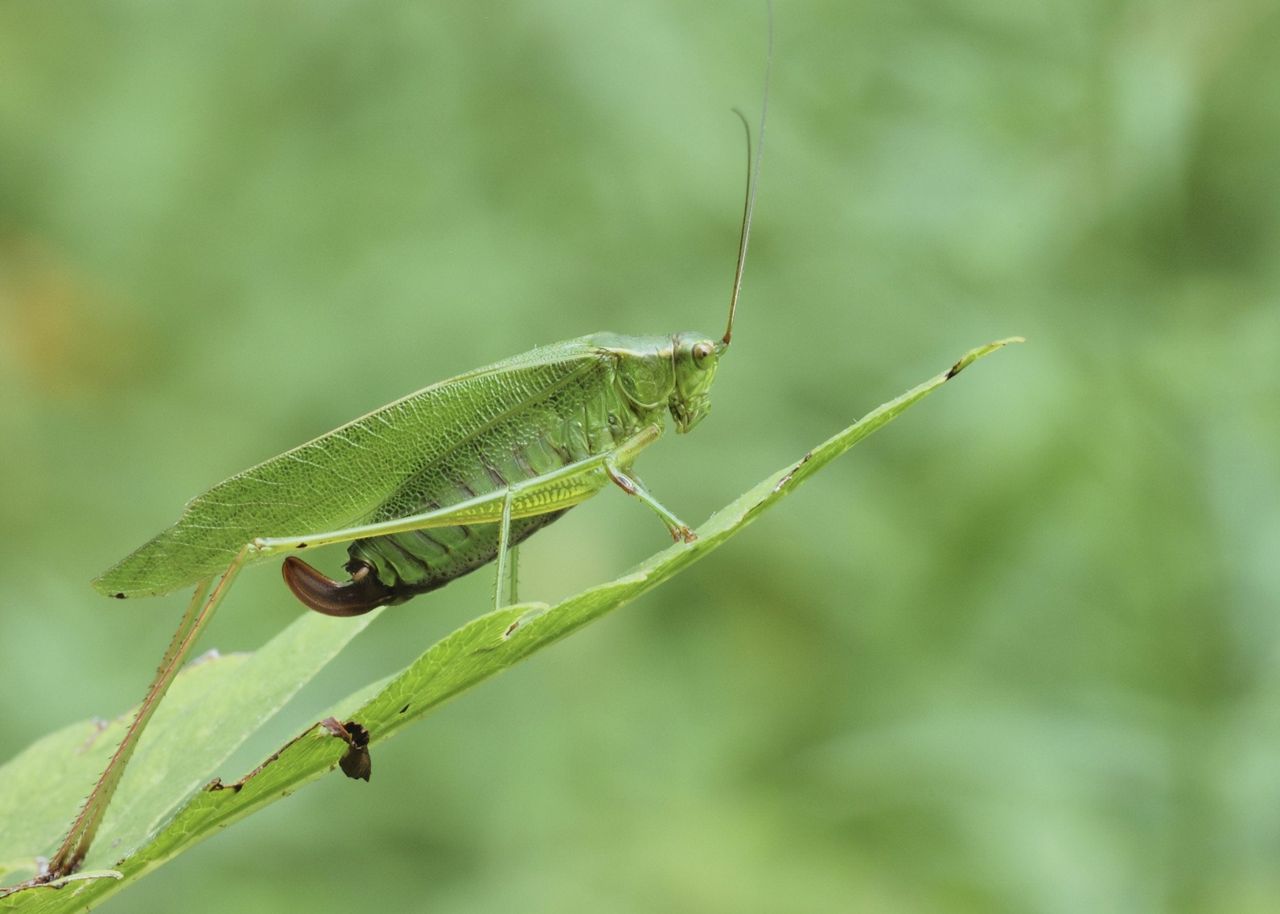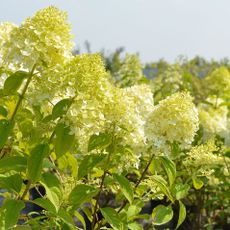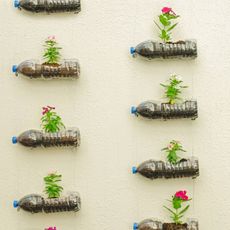Katydid Facts: Managing Katydids In The Garden


Katydids look like grasshoppers, but you can tell them apart by their antennas, which are as long as their bright green bodies. You’ll normally find these insects in shrubs or trees in the garden, since they are leaf eaters. Generally, katydids in the garden nibble leaves but do not do serious garden damage. You’ll need to get a few more katydid facts to determine whether to try to get rid of them. Read on for more information about katydids.
Katydid Facts
Katydids are known for the sounds the males make to attract mates. By rubbing their wings together rapidly, they produce a noise that sounds like “katydid.” It can be, and often is, repeated over and over for hours, night after night.
Although katydids can be found resting on herbaceous plants, they rarely damage them seriously. While some gardeners appreciate their “song,” others consider katydids garden pests and ask how to get rid of katydid bugs.
Katydid Garden Pests
It is important to learn information about katydids that can harm plants. One of the potentially harmful species of katydid is the broad-winged katydid. It is longer than other types of katydids in the garden, at 2 ½ inches (6 cm.), with the same bright green body. The leaves of the broad-winged katydid are veined and look like citrus leaves. This serves them well since it is citrus leaves that they like to eat.
The broad-winged katydid feeds on the leaves of citrus trees generally in the morning. If they eat the foliage of a mature tree, no significant damage is done. However, they become katydid garden pests when they defoliate young citrus trees.
These katydid garden pests may also eat the peel of young oranges growing on the trees. Their nibbling leaves smooth, sunken areas in the peel as the fruit continues to develop. While some fruit falls, others continue to hang on the tree but cannot be sold commercially because of the blemishes on the skin, termed “katydid damage.” Despite this name, the peel damage can just as easily be caused by other insects, like grasshoppers or crickets.
How to Get Rid of Katydid Bugs
In many cases, your best bet is to simply wait out the katydid garden pests. Practical control is difficult. However, if you find many katydid nymphs in your citrus tree while fruit is still small, you can apply spinosad. This pesticide is only mildly toxic and works best if ingested by the insects.
Gardening tips, videos, info and more delivered right to your inbox!
Sign up for the Gardening Know How newsletter today and receive a free download of our DIY eBook "Bring Your Garden Indoors: 13 DIY Projects For Fall And Winter".

Teo Spengler has been gardening for 30 years. She is a docent at the San Francisco Botanical Garden. Her passion is trees, 250 of which she has planted on her land in France.
-
 Grow Limelight Hydrangea Shrubs For Green Themed Displays And Brilliant Borders
Grow Limelight Hydrangea Shrubs For Green Themed Displays And Brilliant BordersIf you're a panicle hydrangea lover in search of flamboyant, long-lasting florals, knowing how to grow Limelight hydrangea shrubs will ensure gorgeous green blooms
By Mary Ellen Ellis
-
 How To Reuse Plastic In Your Garden: 9 Clever Ways To Keep Waste Out Of The Landfill
How To Reuse Plastic In Your Garden: 9 Clever Ways To Keep Waste Out Of The LandfillRepurposing is a great way to reuse plastic in the garden. We have gathered some clever ideas about ways to reuse plastic that are helpful for gardeners.
By Teo Spengler